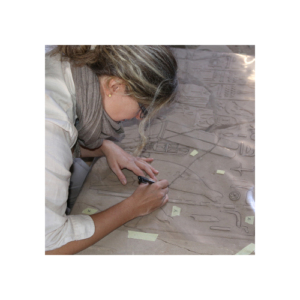Aleksandra Hallmann
- Fellowship Dates 2017-2017
- Research Topic Iconography of God's Wives: The Association between Image and Idea
- Fellow or Grant Type National Endowment for the Humanities
- Affiliation Post-doctoral candidate Polish Academy of Sciences; Oriental Institute at the University of Chicago
This study gathers material for a monograph on the portrayals of five women – Shepenwepet I, Amenirdis I, Shepenwepet II, Nitocris and Ankhnesneferibre – who each held the title God’s Wife (ḥmt nṯr) between 754 and 525 BCE. It examines the iconographic development of the office itself, as well as the iconography of each woman, tracing features that could reflect deliberate constructions of individual identity. The God’s Wife office dates back to the 18th Dynasty but gained special importance during the 23rd-26th Dynasties. During this time, these women started to exercise cultic prerogatives that once belonged to kings. Their position was politically crucial for the legitimacy of the king and territorial sovereignty of Egypt.
This research project will lead to a systematic and detailed evaluation of portrayals of God’s Wives to elucidate the meaningful messages they convey. Each representation will be analyzed in the context of the scene in which it appears, as well as its architectural and topographical context of the place wherein it was inscribed or, in the case of statues, erected. Special attention will be paid to the selection of titles and epithets of God’s Wives found in association with their images. This study will thereby address the political, socio-religious, and propagandistic function of their representations. It may reveal the evolution of their representations and the office itself, as well as test whether any specific cultural features are distinguishable in their portrayals.
This research takes place in situ at the temples of Karnak and Medinet Habu, in the Asasif tomb of Pabasa (TT 279) and in the Egyptian and Aswan museums. For methodological reasons, iconographic work requires a personal analysis of the objects. Such an approach is essential for studies like this project that focus on minutiae. Documentation includes drawing, photographing and describing the God’s Wife portrayals. The evaluation and the comprehension of the contextual setting of portrayals of God’s Wives will yield information about these women, their office and their anticipated power to potentially shed light on their entourage and the political and socioreligious situation in Thebes when Egypt was ruled by Libyan, Kushite and Saite dynasties
